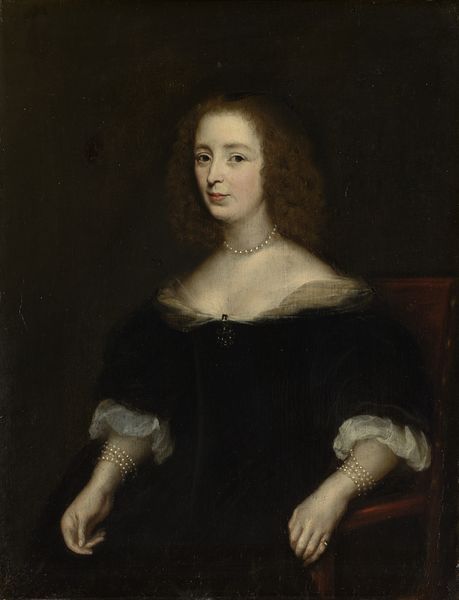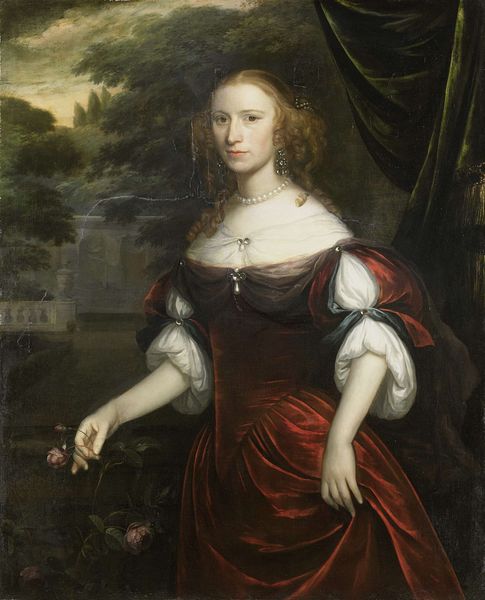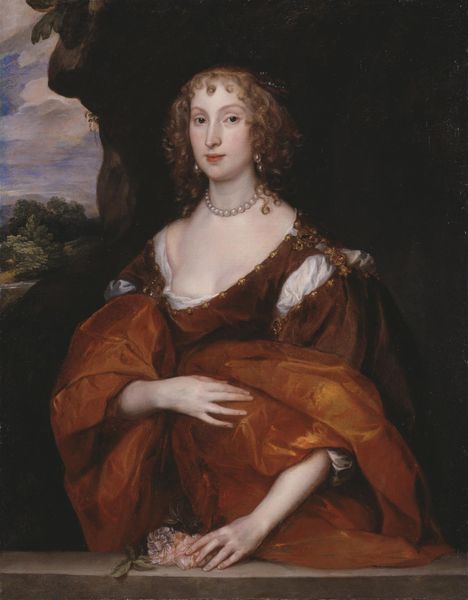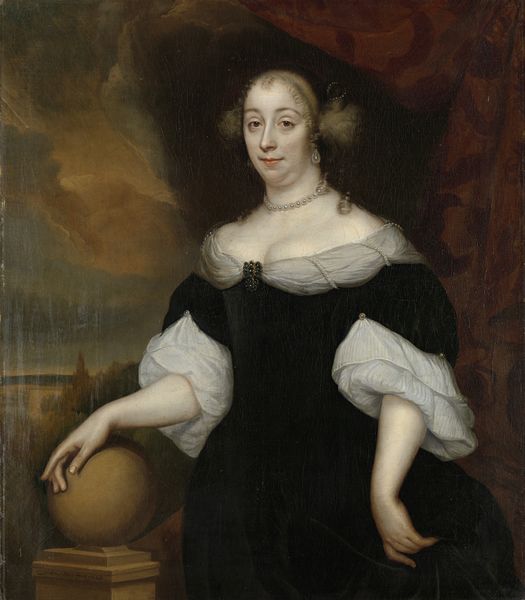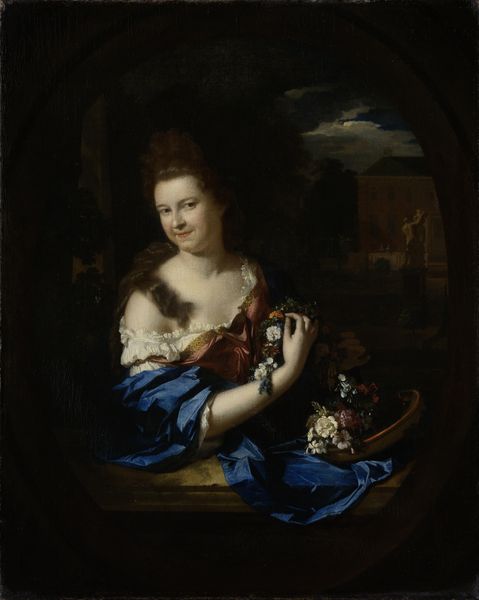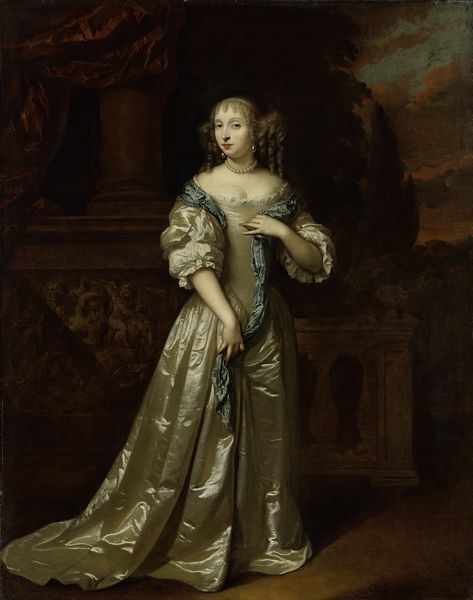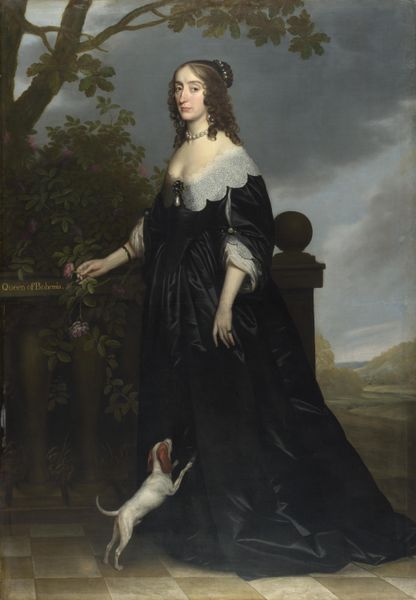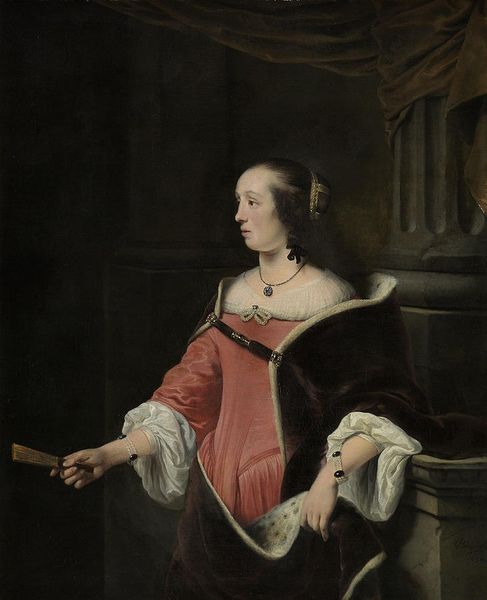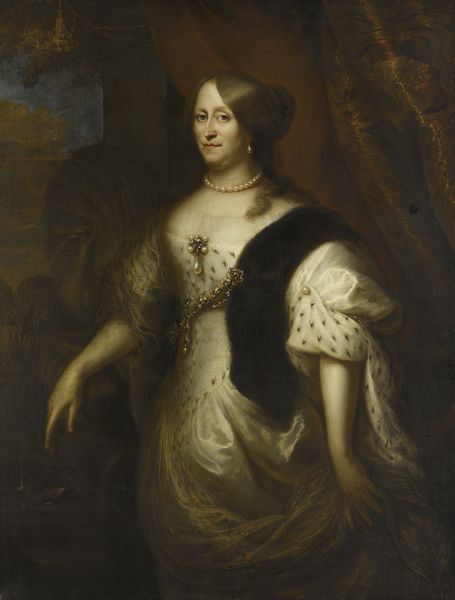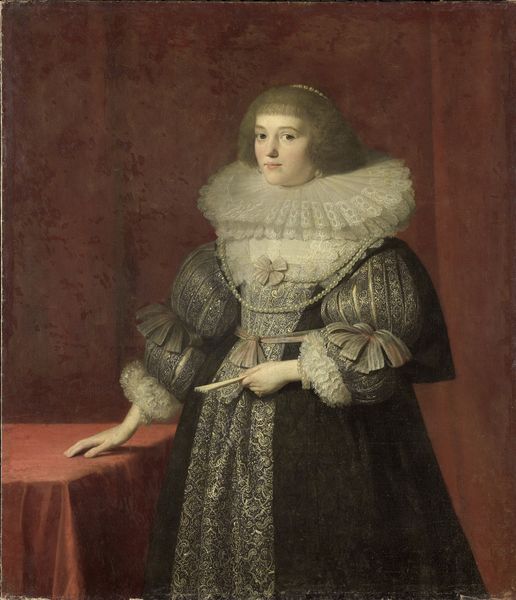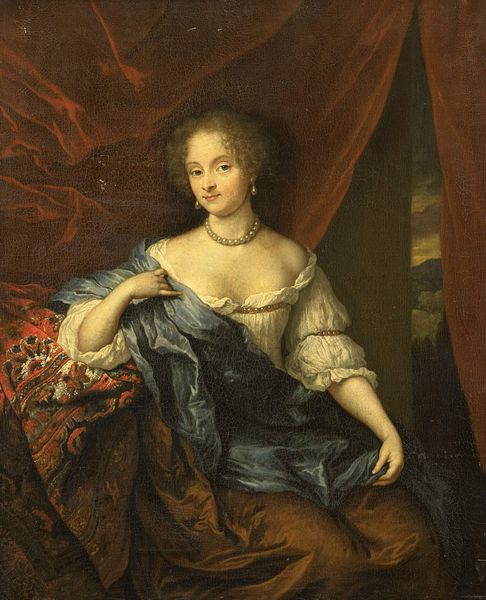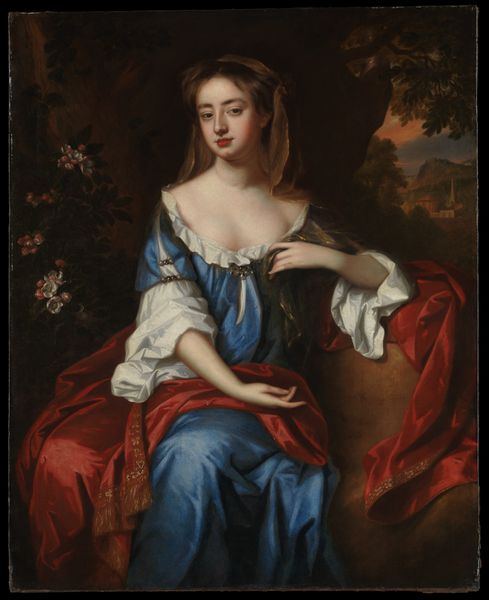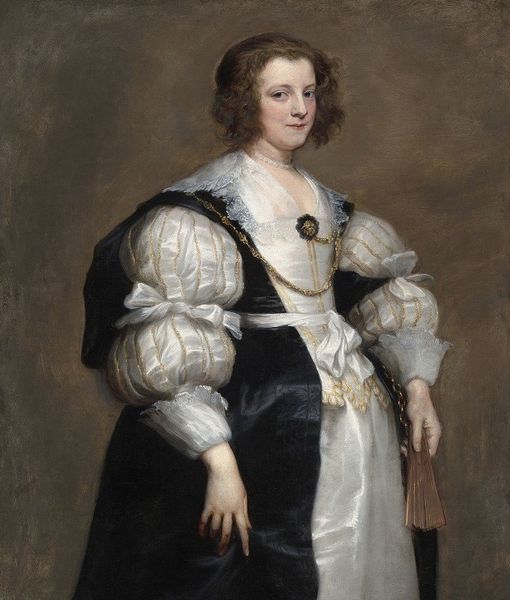
painting, oil-paint
#
portrait
#
baroque
#
painting
#
oil-paint
#
history-painting
#
academic-art
Copyright: Public domain
Gerard van Honthorst painted this portrait of Elizabeth Stuart, Queen of Bohemia, sometime in the 17th century. The somber tone and dark attire suggest a woman in mourning, reflecting the political turmoil of her time. Elizabeth was briefly Queen of Bohemia, a region embroiled in religious and political conflicts during the Thirty Years' War. This portrait, made in the Netherlands, is laden with symbolism tied to her displaced status and the Stuart dynasty's ambitions. Honthorst, a leading painter in the Dutch Golden Age, often worked for aristocratic patrons. The portrait likely served as a form of dynastic propaganda, reinforcing Elizabeth's claim to royalty. The art market and the patronage system played crucial roles in shaping artistic production in this era. To fully understand this work, historians delve into court records, diplomatic correspondence, and the iconography of mourning. Art becomes meaningful through its institutional and social context, reflecting and shaping its time.
Comments
No comments
Be the first to comment and join the conversation on the ultimate creative platform.
